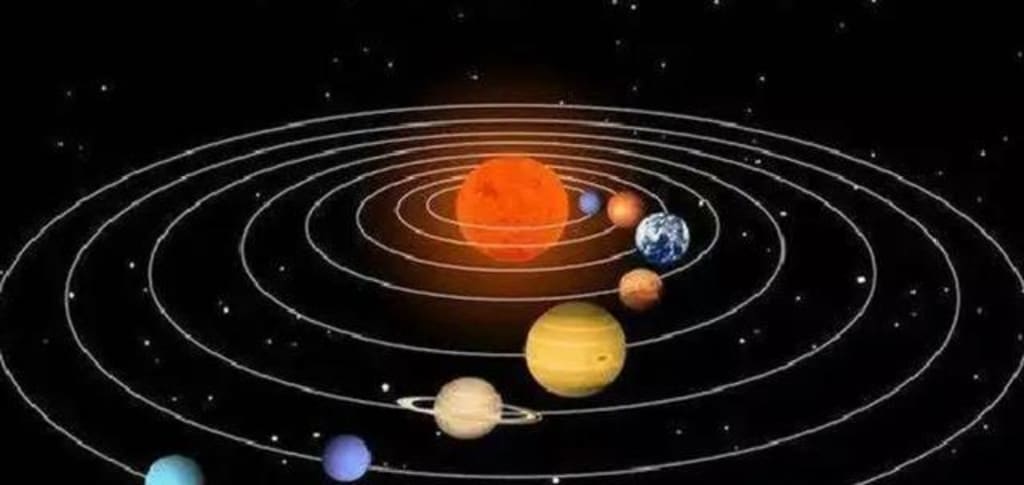Mars-sized object hit Earth to form today's moon
Mars-sized object hits Earth

How did the moon come, where did it come from, and when did it come? People of any age have raised this profound question.
Regarding the formation of the moon, modern scientists have put forward a variety of theories, such as capture theory, homology theory, split theory, etc., to name a few. However, at present, the most convincing is the Theia hypothesis. Today, we will introduce the formation process of the moon from the perspective of Theia hypothesis.
We talked about the birth of the sun about 4.6 billion years ago, which brought vitality to the entire solar system. After the formation of the sun, other planets such as Jupiter and Earth also formed one after another, and the solar system began to take shape.
However, the solar system at that time was very different from today. Not only are the orbits of the eight planets different from today, there are even other planets in the solar system that have disappeared today, such as Theia.
According to scientists' speculation, Theia has a diameter of about 6,102 kilometers, which is about the size of Mars today. Originally, Theia and the earth revolved around the sun peacefully, but unfortunately they were "born in the wrong age" - the late heavy bombing period, and met "the wrong person at the wrong time". Since there were many celestial bodies in the solar system at that time, and they had just formed, they were far from stable, so collisions between celestial bodies were very frequent.
It is speculated that Theia was originally located at the fourth and fifth Lagrangian points of Earth. We have said that the earth has a total of five Lagrangian points, of which the fourth and fifth are symmetrical, forming an equilateral triangle with the earth. A Lagrangian point is a position where the Earth can revolve around the sun on the same cycle. Originally, Theia could exist steadily here, and it was getting bigger and bigger. However, due to the gravitational pull of Jupiter and Venus, it suddenly deviates from its orbit.
Next, it got closer and closer to Earth, and eventually the two inevitably collided. Computer simulations show that Theia hit Earth at a speed of less than 4 km/s (8,900 mph), hitting the Earth at an angle of about 45°. Such an angle is reasonable. If it hit the earth at a more right angle, then the earth would have been blown up long ago, and together with Theia, it would form the asteroid belt of another solar system.
In addition to the slightly rough animation above, NASA scientists also made a very realistic simulated three-dimensional picture. The animation simulates over 100 million particles, shaded according to their instant internal energy and temperature. This is just one of more than 3,000 simulations they have run, and the results show that Earth lost 10 to 60 percent of its atmosphere during the Theia impact.
At the moment when the two celestial bodies collided, the temperature at the impact site rapidly increased to 4000-6000 degrees Celsius. At the same time, a large amount of material on the surface was blasted into space and never returned to Earth. They explored little by little under the action of gravity to form today's moon.
The Theia Hypothesis is not just a slap in the head of scientists, it explains many existing phenomena. For example, the core of the earth is so huge, it may be because it is integrated into the core of Theia; the elements on the surface of the moon are similar to the height of the earth, perhaps because they are originally from the earth.
Not only that, but scientists may even have found the remains of Theia inside the Earth. A team of scientists led by Assistant Researcher Qian Yuan at Arizona State University discovered two structures called Large Low Shear Velocity Provinces (LLSVPs) beneath Africa and the Pacific Ocean, most likely the remains of Theia.
The appearance of the moon brought a turning point in the fate of the earth, and it can even be said that without the moon, the earth today may be as lifeless as the other stars, without any life.
When it was just formed, the Earth's rotation was extremely fast, and there were only 5 hours in a day at that time. When the moon detaches from the earth, the speed of the earth begins to decrease. In astronomy, the conservation of angular momentum is a very important theorem that explains many astronomical phenomena, including the slowdown of the Earth's rotation.
Conservation of angular momentum also has many manifestations in life, such as figure skating. This picture does not accelerate or decelerate. As the athlete expands, the torque increases and the rotational speed decreases; when she contracts, the torque decreases and the rotational speed increases.
In the same way, when the moon appeared, it stretched out like an athlete's arms and legs, increasing the torque, which slowed the Earth's rotation.
Decreasing the rotation speed is a good thing. If the rotation speed is too fast, the geological structure will be unstable, and earthquakes and volcanoes will occur more frequently. If the frequency of such natural disasters is too high, it will be difficult for life on earth to survive.
In addition, the moon has another characteristic, that is, it is large. The Moon to Earth ratio is the highest of any moon-to-host planet ratio in the entire solar system. The diameter of the moon has reached 1/4 of the earth, and the mass is also 1/81 of the earth. Although the gap is not small, it is already a very close satellite-host planet combination.
With its huge body, the moon has blocked countless impacts of small celestial bodies for the earth, which can be seen from the craters (craters) dotted on the lunar surface. It is conceivable that without the shield of the moon, I don’t know how many small celestial bodies will hit the earth, and there will inevitably be terrifying disasters enough to cause mass extinction.
Even though the moon has protected us for over four billion years, it doesn't seem to want to settle down in this position. Observational data show that the moon is moving away from Earth at a rate of 3.8 centimeters per year. So, will the moon leave the Earth-Moon system in the future? Or will it stop somewhere? We will leave this question to the next issue~
About the Creator
dardani lennon
The question mark is the key to any science
Enjoyed the story? Support the Creator.
Subscribe for free to receive all their stories in your feed. You could also pledge your support or give them a one-off tip, letting them know you appreciate their work.






Comments
There are no comments for this story
Be the first to respond and start the conversation.